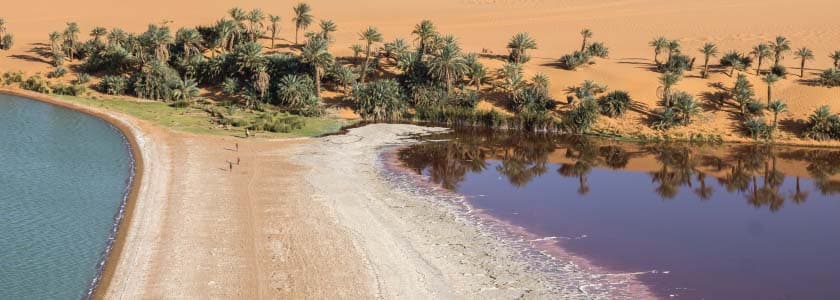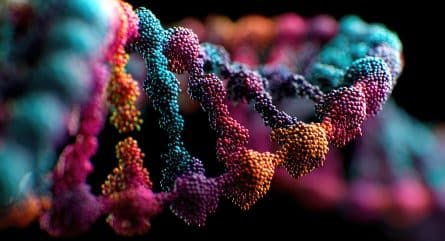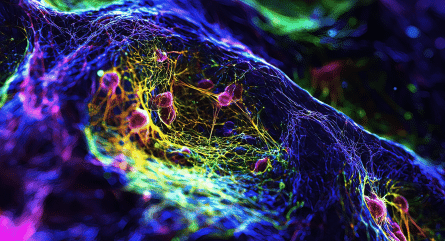The Republic of Chad occupies a broad swath of central Africa. It’s roughly three times the size of California but its population is barely one-third of the Golden State’s. Though the northern half is decidedly Saharan, the south is nearly tropical, and Lake Chad, which the country shares with Cameroon, is the continent’s second-largest wetland.
For millennia, the country has served as an astounding crossroads of humanity. Early humans moved north and eastward throubgh the country on their way to Arabia, while prehistoric Europeans moved across the country from the north. Gene flow from the Near East, however, which is present in Ethiopia, made little headway into the country. Today, Chad is home to more than 200 ethnic and linguistic groups which are poorly allied—much of that diversity can be tied to the presence of Lake Chad, which was a major draw for migrants for thousands of years and to this day is home to dozens of densely packed villages, cut off completely from the outside world and surrounded by water and marsh. Despite this diversity, the country is among the least understood genetically on the planet.
That’s slowly changing.
Matching migration to language
A handful of recent studies have delved into the country’s genetic diversity, parsing Holocene migrations from Eurasia and looking in particular at migrational ties to some of the country’s little-understood languages. One of those, for example, is Laal, an unclassified, poorly described language isolate spoken by a few hundred people who live on the banks of the Chari River and sell salt extracted from the ashes of doum palms.
One of the first studies of Chadic genetics, which was published in 2009, was by a multi-national team of researchers who traced the migration of pastoralists, with a focus on the mitochondrial L3f haplogroup. That study found East African origin for the L3f3 clade that emerged soon after the Out-of-Africa migration of around 57,000 years ago. That finding, the authors noted, squared well with archaeological evidence that migration was aided by what was, at the time, a much wetter and more humid Sahara.
A subsequent study in the European Journal of Human Genetics noted that while Y chromosomes belonging to haplogroup R1b are found mainly in Asia and Europe, the paragroup R-P25 is found in high concentrations in areas west of Chad, evidence of a prehistoric Asia-to-Africa back-migration. The associated R-V88 haplogroup was shown to have strong genetic contiguity with Chadic-speaking people and other Afroasiatic-speaking groups of North Africa, and that this migration also played out in the Holocene and when the Sahara was wetter than today.
Populations in the Chad Basin show influences from East Africa, Eurasia, and the Mediterranean, according to a cluster of studies that looked at population structures using high-throughput genotyping of mitochondrial DNA coding SNPs, particularly among nomads.
“Studying diverse Chadian populations on a whole-genome level presents an opportunity to shed more light on the history of African-Eurasian mixtures, including whether or not selection after admixture is a widespread phenomenon in Africa and how the historical events in Chad are related to events that have occurred elsewhere in Africa and the Near East,” noted a 2016 study in the American Journal of Human Genetics.
Genetic diversity matches climactic variation
To date, the most comprehensive study of genetic history in Chad came in a 2018 paper published in the American Journal of Physical Anthropology. That study, by two Americans, found that genetic diversity in the country was roughly divided north by south—which, not coincidentally, is how the country is currently split climactically. The core ancestry of southerners is Central African—most closely to the Pygmies—and that southerners experienced four waves of gene flow over 3,000 years. Northerners don’t share that Pygmy ancestry and are instead influenced by North African ancestry.
Perhaps most interestingly, that study found that the Y DNA haplogroup R1b arrived during a period known as Baggarization, when Arabic-speaking nomads contacted indigenous sub-Saharans. The spread of Chadic languages—outliers like Laal not included—happened by other means, the authors noted.
Laal’s core vocabulary is a mystery. Studies have noted that it’s not Afroasiatic, Niger-Congo, or Nilo-Saharan. Where did it come from? The American authors suggest a connection to the Sao, a civilization which developed city-states around Lake Chad beginning as early as 600 BC. The tail end of the Sao was documented in two books by a 16th century grand iman of the Bornu Empire named Ibn Furtu.
“The spread of R1b can be attributed to Baggara Arabs, not ancient Eurasians or Near Eastern farmers,” the Americans wrote. “Furthermore, the spread of Chadic languages likely predated the arrival of R1b by over 3,000 years. Finally, the genetic data support the tantalizing prospect that the Laal language can give insight into an otherwise lost Central African linguistic phylum.”


























